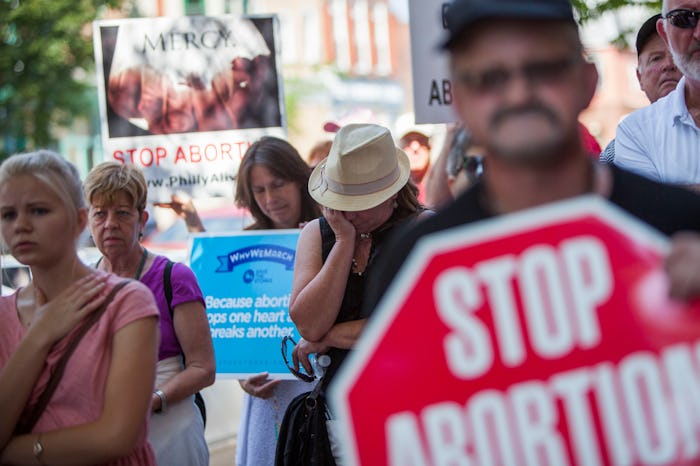Life

Outlawing Abortion Won't Stop It From Happening, & Here's Why
On Nov. 8, the United States elected a president into power who has vowed to overturn Roe v. Wade, the Supreme Court decision that has allowed women across the country to access abortions since 1973. With the 43-year-old law under threat, many Americans are wondering what would happen if the United States outlawed abortion again. While many anti-abortion activists seem to think that this would effectively stop abortions from happening in the country, the numbers simply don't support that theory. If we look at abortion rates from before Roe v. Wade and from countries where it is currently illegal, outlawing abortion wouldn't keep abortions from happening — it would simply make them much more dangerous procedures for the women who needed them.
First of all, let's compare the rate of abortions in the United States both before and after the procedure was legalized. In 2012, according to the Centers for Disease Control and Prevention, 699,202 (legal) abortions were performed across the country. Compare that to 1967, when estimates put the number of (illegal) abortions across the country at 829,000, according to the Guttmacher Institute. The image painted by those numbers — that the rate of abortion has actually decreased since its legalization — is echoed by more recent studies that compare the abortion rates in countries where abortion is legal or outlawed.
One study, published in The Lancet in 2012, analyzed global abortion rates and found that — contrary to popular opinion — abortion rates were actually lower in areas with more liberal abortion laws. "Restrictive abortion laws are not associated with lower abortion rates," the authors wrote. Instead, "measures to reduce the incidence of unintended pregnancy and unsafe abortion, including investments in family planning services and safe abortion care" are crucial steps towards ensuring women's health, improving maternal health, and promoting gender equality.
"People younger than me don’t remember what the bad old days were like," Dr. David Grimes, a clinical professor who offered women abortion care for over 40 years, told Think Progress in 2014. "That’s why people seem so complacent about allowing those days to return. ... The current juggernaut of laws are designed to drive women back into the back alley. But people don’t really understand what the implications are."
What Grimes was referring to was the number of women who were injured or died after receiving unsafe abortions. He told Think Progress that he saw complications of all kinds: one woman ran a 106-degree fever after a rubber catheter was inserted into her uterus; another suffered from antiseptic shock when a dead fetus was left inside of her. Women attempted to perform their own abortions, using knitting needles, coat hangers, and chemicals (such as laundry bleach and turpentine), often with unsurprisingly adverse effects. According to The New York Times, most public hospitals also had septic abortion wards, where they would treat women suffering from complications of unsafe abortions.
Luckily, we don't live that way anymore. In the 1940s, according to ThinkProgress, more than 1,000 women a year died from unsafe abortions. In 1930, 18 percent of maternal deaths were due to illegal abortions; by 1965, that number hovered at 17 percent. In 2011, the CDC only counted two abortion-related deaths, and there are only 0.6 deaths per every 100,000 legal abortions.
If Trump manages to keep his word and overturn Roe v. Wade, make no mistake: the number of abortions in the United States would be very unlikely to drop. Additionally, if Trump repeals the Affordable Care Act, cutting many women's access to free birth control across the country, the rate of abortions in the United States would, in all likelihood, actually increase. So for those waiting to see what happens, make sure to protest and donate to pro-choice organizations. Women's health in the United States depends on it.